How Big Should a Sailboat Be to Sail Around the World?
I see you've already started googling your research and want to know how big of a boat you need to circle the globe. Well, search no more, this article is here to tell you in-depth what size boat you need to sail around the world.
How big should a sailboat be to sail around the world? The best sailboat size to sail around the world is 35 to 45 feet. Smaller boats of 25 feet will be more uncomfortable and inconvenient; it is, however, possible. Larger sailboats of 60 foot and up will be more comfortable, but they are more expensive as well.
Read on, we will have a look at these statements more closely; a cookie-cutter approach is never good, so we will analyze it a bit more in-depth. Obviously, it depends on your specific situation.
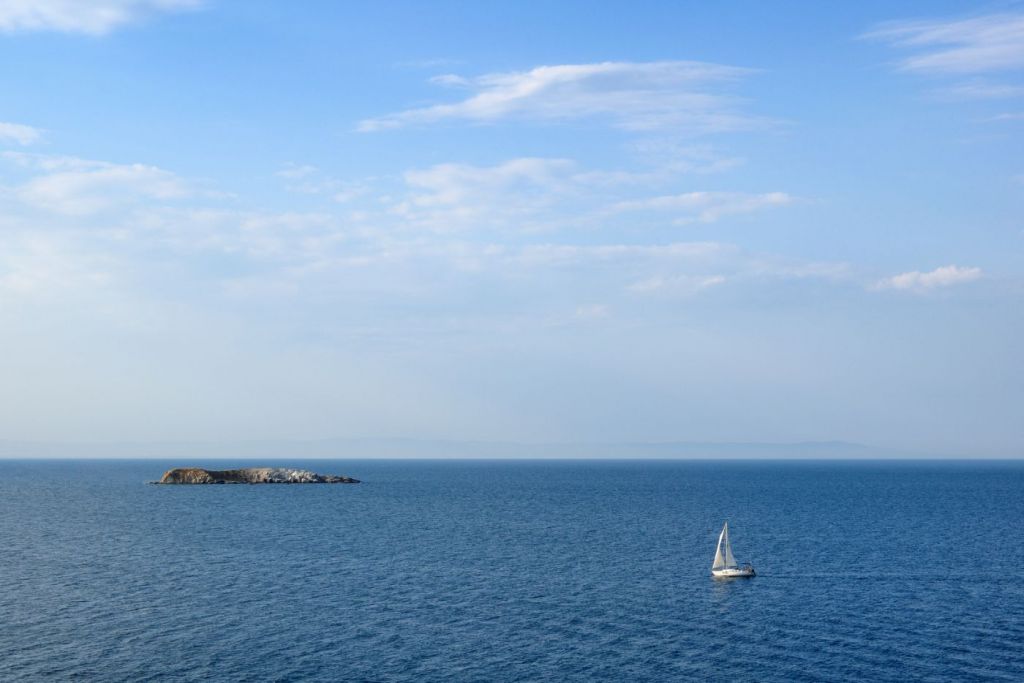
On this page:
What's the Ideal Boat Size to Sail Around the World?
The ideal sailboat size to sail around the world is between 35 and 45 feet long. This length will ensure a high enough maximum hull speed, good handling in high waves, and enough cargo capacity to carry multiple weeks of food and water. Longer boats will perform as well, but are more expensive too.
The most important factors in sailing around the world are:
- comfort
- speed
- cargo capacity & supplies
Longer boats are faster and can carry more cargo, which you will need for circumnavigation. Especially water can take up a lot of space and weight.
Smaller boats will have less cargo capacity. Smaller boats are slower as well, which increases the need for cargo capacity since you'll need more water and food.
Boats over 45 feet long will get disproportionally expensive. However, there are a lot of boats available between 35-45 feet for very reasonable prices.
We did research on average sailboat prices by comparing thousands of prices for you. Learn more on the average cost of buying & owning a sailboat here.
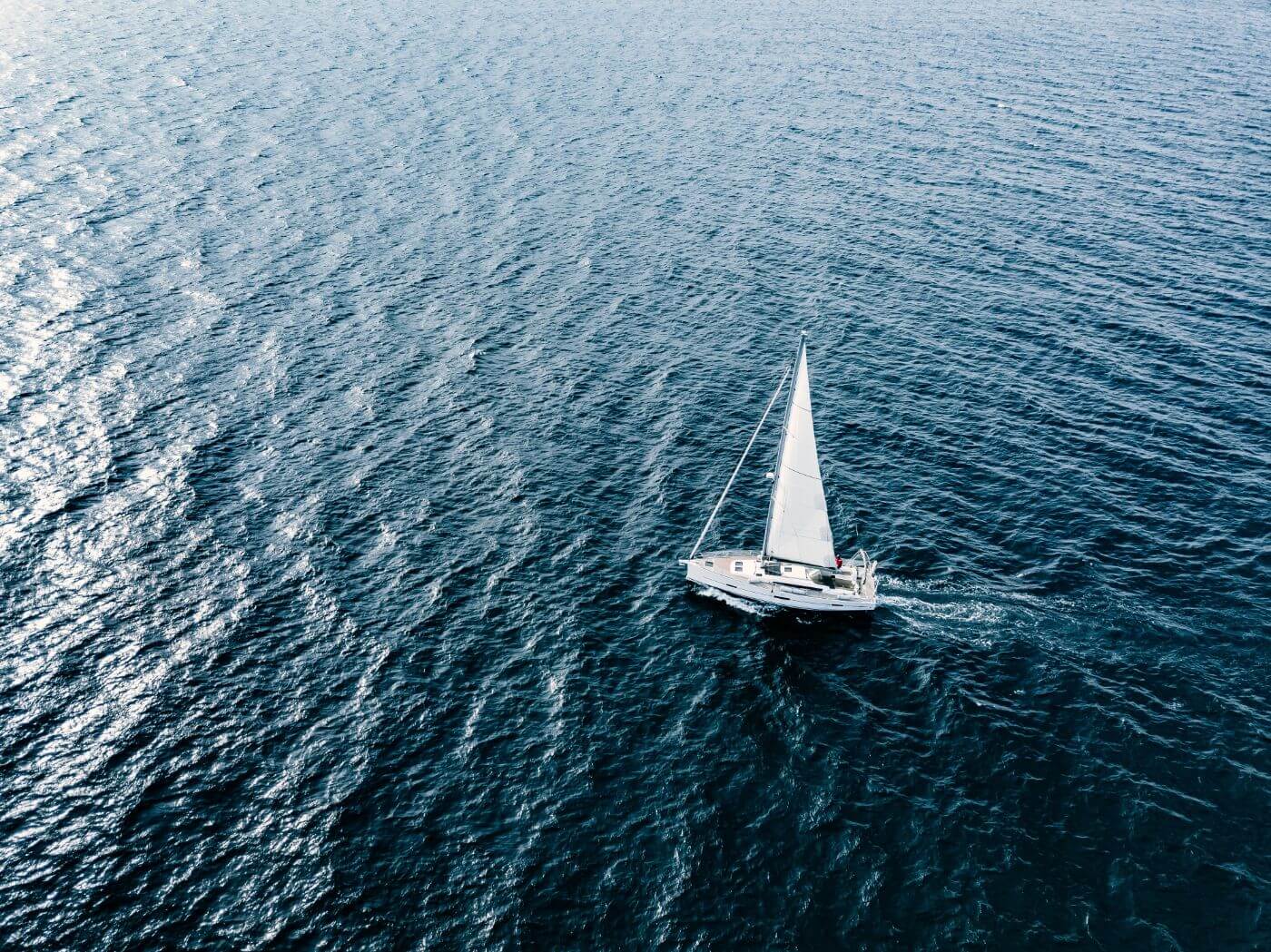
Does (Boat) Size Matter?
The first thing you're probably thinking about is whether your boat of choice can handle the weather, the waves, and the long journey. But contrary to what you might have been led to believe, size is less relevant than you probably think.
Not that it doesn't matter in the overall picture, it does, but for very different reasons.
You see, a 20-foot Flicka is just as capable of crossing oceans as is any seaworthy 60 footer. It is more tricky to handle, especially in harsh conditions, but the boat's size doesn't necessarily impact its bluewater abilities.
As long as you stay within a reasonable range and keep away from 10-foot dinghies, of course. Though the smallest boat to ever cross the Atlantic had just a bit over five feet.
Respect to Hugo Vihlen, the man who operated this miracle.
Now I understand you aren't asking how big a boat can be to circumnavigate, you are asking how big it should be. But the reason I started with explaining that even small boats can do the job is that sailing around the world can get pretty pricey.
I wanted to make sure you know that even if your budget isn't the largest, so you can't go for a bigger boat, that shouldn't necessarily stop you from getting what you want.
With that in mind, let's kick this off with what it means to sail around the world on a small boat and work our way up in size.
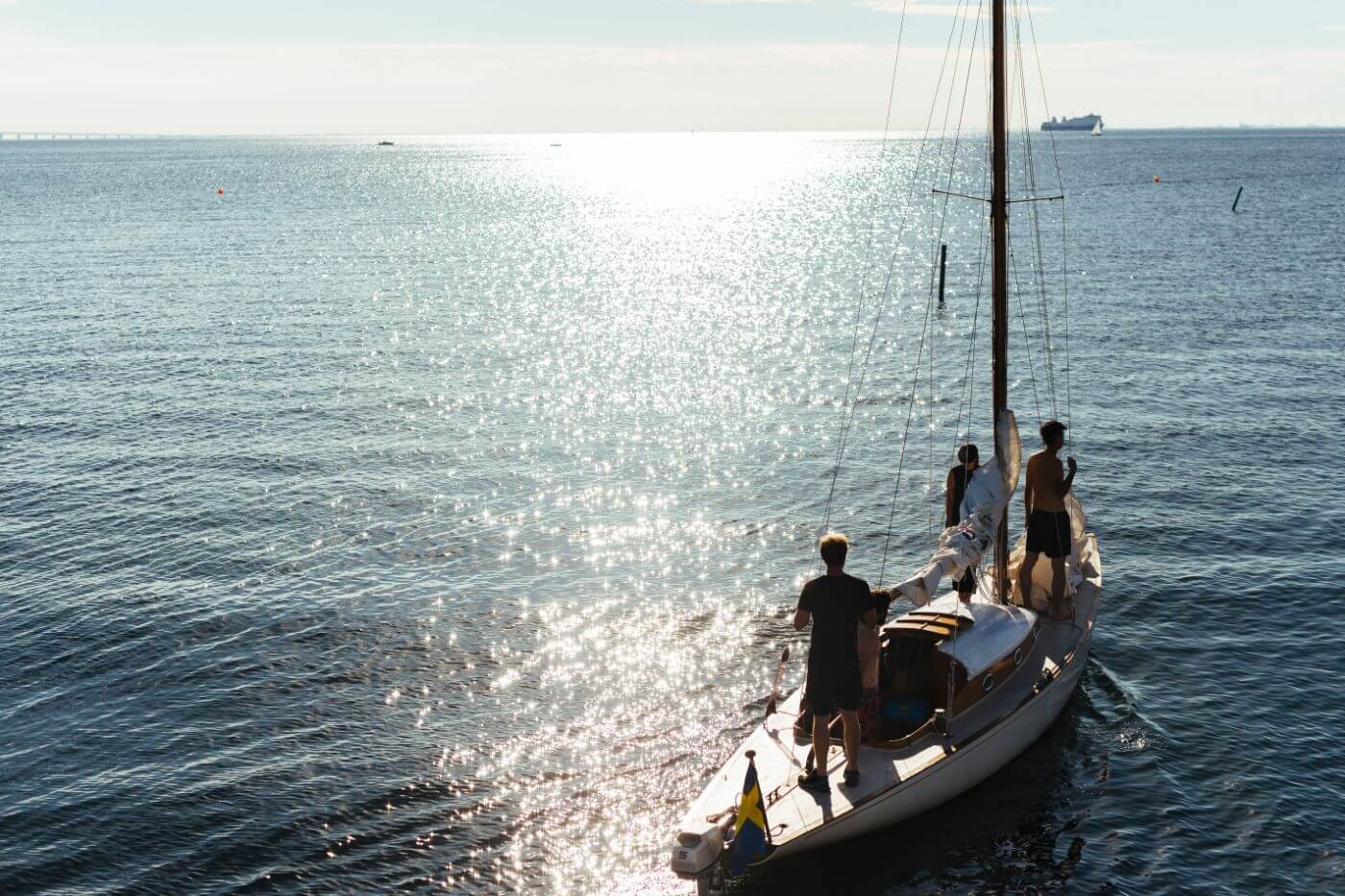
Small Boat Circumnavigations
Now that we've established that small boats can too be seaworthy, let's see the drawbacks.
Such a vessel will take you from point a to point b successfully, but you might face issues when it comes to its speed.
There is a thing called hull speed, something too complicated for my simple mind to understand beyond this simple statement:
'because of physics, the longer the boat, the faster it can go'.
So a 1000 mile crossing with a 20 footer will be significantly slower than with a 50 footer, even with the same weather conditions. If you are in a hurry, take this into account.
Longer journey means more supplies
Also, take it into account when planning the logistics. If your passage takes more time, you will need more supplies, for which you need more space - and on a small boat, that spells possible storage space issues.
Dried meat and oatmeal isn't particularly bulky, but water volume is non-negotiable. And you need at least a couple of liters per day.
Even if comfort is not an issue for you and you don't mind spending a few months in a tiny warehouse full of provisions with not much room for yourself, supplies, paired with all the necessary equipment you need, become heavy and a small sailboat can find itself being quite overwhelmed by the weight, becoming more difficult to maneuver.
Which is the last thing you want when facing the Poseidon himself in the middle of the Pacific Ocean.
Just calculate the weight of water you will need for a four-week crossing - something you may easily encounter when sailing around the world.
Even if you minimize the freshwater use and have it for drinking only (hello salty showers) you will easily get to nearly a hundred kilos, and that's just for one person.
On an average 5,500 lbs 20 footer, you might end up in a passage situation where just water for two people makes up 10 percent of the boat's weight, which isn't ideal.
Small boats are more affected by waves
Last but not least, small boats will be influenced by the waves more than larger ones would be. Again, they can deal with them, but the question is if you can. The constant up and down movement can wear even an enthusiastic explorer down.
I understand that this is a matter of comfort, something which many of you hardy ones won't need. Just putting it out there to warn you ahead of time.
The Ideal Boat Size For Circumnavigations
What you ideally want is to have your boat be around 40 feet, give or take five. This size will give you enough space to store all you need for long crossings, you can fit a partner plus a bunch of friends on it and its sails and keel are likely big enough to have your back even in rougher conditions.
Moreover, at this size, boats still aren't too much if you want to operate them by yourself, +-40 feet is generally quite manageable short-handed, especially if you tweak them a bit.
Short-handed simply means 'solo'.
That makes sense for circumnavigation especially because it can lead to scenarios where you will have to rely on yourself without the ability to get much external help. If you sail as a pair and want to take shifts, or if your partner in crime becomes unable to contribute for whatever reason, it will give you peace of mind knowing you can do the job for both.
Now for the important, storage space matter - unlike the smaller boats, +-40 footers won't suffer as much when you load them with all you need for such a journey, so you can safely get spare sails and parts without overloading your precious vessel.
This means more comfort since you can prepare yourself for many worst-case scenarios - be it equipment breaking down or a two-week crossing turning into a four week one because of bad weather.
They say long passages are not as much about sailing skills, rather about the ability to maintain your boat and good spirit. For that, spare parts and good company is needed. An overprepared sailor is a happy sailor.
All the other categories are covered quite well by this size too. Prices won't ruin even a tighter budget, comfort-wise you won't suffer more than you need to when the seas get rough and speeds are sufficient enough so that when you will read prognoses about how long your passages will take, the estimates won't be off by much.
Large Boat Circumnavigations
So what's wrong with doing the journey with a 50+ footer? In short, as long as you can afford it, nothing.
In fact, comfort-wise, space-wise, and speed-wise, this is the best option. You won't have issues when taking ten friends on board for a ride-along, you can store enough food to go around the whole world without stopping anywhere to resupply, you can have plenty of extra gear and spare parts without even noticing it.
The ride will be smooth, even bigger waves won't be as felt, the long hull will make for some impressive speeds, simply, a boat the size of a floating family apartment has a lot to offer.
Large boats are not always rigged for solo sailing
When it comes to handling, years ago this would be the point where larger boats fail, but these days, even 60+ footers are often designed for solo sailing, with electronic winches, self-tacking jibs, and all the controls handily within your reach from the helm. So if you stick with a new boat, even a larger size shouldn't pose problems when short-handed.
As already probably apparent, the only issue here is the price. Of course, it is easy to recommend going around the world on a 70-foot cruiser. But it would be a bit of an unfair excuse for a tip since for the majority of the readers this would be financially unattainable.
So what you should take away from this particular part is that if you want to go for it, as long as you stick with new models made for easy operating, not much in terms of handling stands in your way. And yes, it will provide you with all the comfort you think it will.
In Conclusion…
All in all, when you look at boats that are used for heavy traveling including circumnavigations, you will see the 40-foot mark quite often. It wins in terms of practicality, affordability, and manageability. So if circling the world is what you want, you won't be making a mistake if you go for this size. Although if you feel like it, and have a stomach and skills for it, you can go small, very small. And if you can afford it, with today's technology, even a 70 footer can be the right choice.
Did you find the answer to your specific question?
👍 97 👎 4
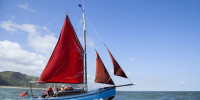
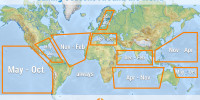

Comments
Laura Phasouliotis
Thank you for your advice, it has been super helpful as I am just embarking on a sailing hobby at the age of 60. It has been my lifelong ambition to own a boat and sail.
Rima
I would love to have your suggestions for a trip. A 45 or 55 would be okay. Would like suggestions as to crew needs etc.
Dennis France
I am ticking on (87 in good condition) So would need a skipper and another crew besides myself. If I were to purchase a new Kraken 50’ what problems do you see??
Andy
A very good article. Give a very firm answer, 40-foot. No BS like “It depend on how many people on board”.
Daniel Clifford Cunningham
I see the writer and commentors are sensible and serious about doing this sailing thing. In a few months, when the VA hospitals have either fixed my heath problems
or I will be dead - I can raise the money to buy a boat, a 40-foot boat and learn enough to sail it solo - or with a lady, a friend, crew-handyman - around the damn world.Before that I will have learned about sailing, owned a smaller boat, learned to accept being seasick or gotten used to it.
I am a Viet Nam veteran, marines, never been on board a ship. I can swim , a little .Since I am over 70 y.o. now.
Can anyone give me suggestions, help, where to get started on this mission?
Roger Cox
Great article. This is a beautiful summary. Great job.
Like most big questions, it is a matter of balancing needs which also include the money trick.
The following facts will be helpful.
For a new boat, cost goes by weight except for carbon. So look at cost per pound of boat. Your recommended 40 ft. fits in this equation. The use of carbon makes the boat lighter and stronger. But at increased cost. One factor you did not discuss directly is boat weight to total boat weight ratio. An important number. Facts and data will be helpful. The speed factor is essential and needs more elaboration. As a practical matter, speed is an import item. It all depends on intended use. If you are doing island hoping in the Caribbean, a smaller boat will suffice. Shorter distances. But if the south seas is your place. The distances are much longer and as a practical matter, more speed must be in the equation. Speed is a complicated equation.Marvin
My son moved his 48 foot sailboat to from the east coast US to Italy I fought up with him on Sept. 5 in nova Scotia this year and we crossed to the continent I got off in the azores and went back to Idaho as a friend of his met us there and helped out frist time on sailboat for me and at 350 lbs and 67 yrs old I wasn’t much help although my wife was glad to see he didn’t go alone.we missed the worst of a the hurricanes and I only fell down once the frist day and hurt my ribs and couldn’t move around for days. James was the greatest we had to fix the motor and steering system everyday I can’t believe how much u need to know to go to sea thanks
Leave a comment